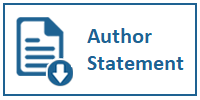Risk Communication for Earthquake Mitigation in Indonesian Women's Prison
DOI:
https://doi.org/10.31937/ultimacomm.v14i1.2589Abstract
Women are part of a vulnerable group. Earthquake mitigation is very important for women to deal with disaster hazards. The prisoner status that some women have, further increases their risk of becoming an earthquake victim. Earthquake mitigation is needed to increase women prisoner's knowledge and skill to deal with eartquake at prison. However, several Women's Prisons in Indonesian are still facing challenges, including Lapas Perempuan Kelas IIB Yogyakarta. The researcher elaborated the Protective Action Decision Model (PADM) through operational analysis using a classical communication model, consisting of source, channel, message, receiver, effect, and feedback. A classical communication model is used to explain the implementation of earthquake mitigation for women prisoner at Lapas Perempuan Kelas IIB Yogyakarta. Data was collected by observation, interviews, and document studies. Meanwhile, this research was conducted with a case study method. The results of this research finds that Lapas Perempuan Kelas IIB Yogyakarta has been organized earthquake mitigation but it's still necessary to develop. Lapas Perempuan Kelas IIB Yogyakarta needs to develop sustainable earthquake mitigation that can adapt to women prisoner's special needs and women prison's dynamics. These findings return to risk communication concepts as an applied discipline that is geared towards promoting long-term hazard adjustments such as mitigation. Risk communication is complex and covers the entire communication process.
Downloads
Downloads
Published
How to Cite
Issue
Section
License
Ultimacomm Jurnal Ilmu Komunikasi allows readers to read, download, copy, distribute, print, search, or link to its articles' full texts and allows readers to use them for any other lawful purpose. The journal allows the author(s) to hold the copyright without restrictions. Finally, the journal allows the author(s) to retain publishing rights without restrictions
1. Authors are allowed to archive their submitted article in an open access repository
2. Authors are allowed to archive the final published article in an open access repository with an acknowledgment of its initial publication in this journal














